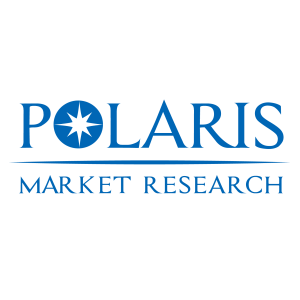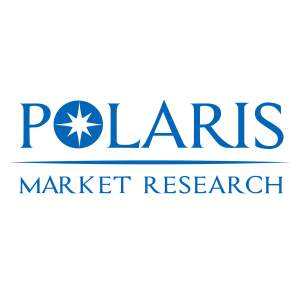Market Overview
According To The Research Report, The Global Exterior Insulation And Finish System Market Was Valued At Usd 100.64 Billion In 2023 And Is Expected To Reach Usd 246.20 Billion By 2032, To Grow At A Cagr Of 10.50% During The Forecast Period.
The Exterior Insulation and Finish System (EIFS) market is witnessing steady growth as demand surges for energy-efficient building solutions and modern façade systems across residential, commercial, and industrial applications. EIFS has become a preferred exterior wall cladding option due to its thermal insulation properties, design flexibility, and cost-effectiveness. The system enhances building performance by improving energy efficiency, reducing moisture infiltration, and providing aesthetic versatility. As sustainability and energy conservation continue to drive global construction trends, the EIFS market is positioned for long-term expansion.
Increasing urbanization, renovation of aging infrastructure, and stricter energy efficiency regulations have accelerated the adoption of EIFS across various regions. Additionally, technological advancements in material composition and installation techniques are supporting market development. Construction professionals and architects are increasingly leveraging EIFS for both new buildings and retrofit projects, emphasizing its role in achieving green building certifications and reduced carbon footprints.
What is the Exterior Insulation and Finish System Market?
The Exterior Insulation and Finish System market refers to the global industry involved in manufacturing, distributing, and installing layered cladding systems designed to provide superior insulation and exterior protection for buildings. An EIFS typically consists of three main layers: an insulation board attached to the substrate, a base coat reinforced with fiberglass mesh, and a durable finish coat that gives the building its final appearance.
EIFS systems are recognized for their ability to deliver thermal performance while maintaining design freedom. They are widely used in both residential and commercial construction for their lightweight properties and adaptability to complex architectural designs. The system helps prevent heat loss in colder climates and limits heat gain in warmer regions, contributing to substantial energy savings.
The growing emphasis on sustainable construction, coupled with stricter building codes, has encouraged builders to adopt EIFS as a cost-effective alternative to traditional masonry and brick cladding. The system’s ability to reduce energy consumption, enhance building durability, and improve occupant comfort makes it an essential component in modern building envelopes.
Key Market Growth Drivers in the Exterior Insulation and Finish System Industry
1. Rising Demand for Energy Efficiency in Buildings
The growing global focus on reducing energy consumption in buildings is one of the major drivers of the EIFS market. Governments and environmental agencies are implementing stringent energy codes and sustainability standards, prompting builders to use exterior insulation systems that minimize thermal bridging and air leakage. EIFS helps achieve these goals by offering continuous insulation and improved energy performance.
2. Increasing Urbanization and Construction Activities
Rapid urbanization, particularly in developing economies, has spurred large-scale infrastructure projects and housing developments. As cities expand, the demand for cost-effective and energy-efficient building materials grows. EIFS offers a lightweight, easily installable solution that meets the requirements of high-performance construction.
3. Technological Advancements and Product Innovation
Continuous research and innovation in insulation materials and coating technologies have significantly improved the performance and durability of EIFS. Manufacturers are introducing eco-friendly materials, enhanced adhesives, and impact-resistant finishes to cater to diverse climatic conditions. These innovations not only boost product lifespan but also improve the aesthetic and environmental profile of EIFS applications.
4. Growing Emphasis on Green Building Certification Programs
Green building programs such as LEED (Leadership in Energy and Environmental Design) and BREEAM (Building Research Establishment Environmental Assessment Method) have increased awareness of sustainable construction. Since EIFS contributes to reduced energy use and lower emissions, it plays a crucial role in achieving certification standards. This growing emphasis on eco-friendly construction practices has positively influenced EIFS adoption worldwide.
𝐄𝐱𝐩𝐥𝐨𝐫𝐞 𝐓𝐡𝐞 𝐂𝐨𝐦𝐩𝐥𝐞𝐭𝐞 𝐂𝐨𝐦𝐩𝐫𝐞𝐡𝐞𝐧𝐬𝐢𝐯𝐞 𝐑𝐞𝐩𝐨𝐫𝐭 𝐇𝐞𝐫𝐞:
https://www.polarismarketresearch.com/industry-analysis/exterior-insulation-and-finish-system-market
Trends Shaping the Future of the Exterior Insulation and Finish System Market
1. Adoption of Advanced Insulation Materials
The integration of high-performance insulation materials, such as expanded polystyrene (EPS) and mineral wool, is transforming the EIFS industry. These materials provide enhanced fire resistance, moisture protection, and acoustic insulation, expanding the market’s applications in both commercial and high-rise buildings.
2. Rise of Smart and Digital Construction Solutions
The growing use of Building Information Modeling (BIM) and digital design tools has streamlined EIFS installation and maintenance. By allowing better visualization and precise application, digital construction technologies improve system accuracy and reduce waste during installation.
3. Preference for Lightweight and Aesthetic Building Materials
Architects and developers are increasingly prioritizing lightweight cladding materials that do not compromise on visual appeal. EIFS provides extensive design versatility through customizable textures, patterns, and colors, enabling builders to achieve a modern look without adding structural weight. This trend is particularly strong in the renovation sector, where EIFS offers a cost-effective method for upgrading old façades.
4. Focus on Fire Safety and Durability Enhancements
Recent building safety regulations emphasize fire-resistant and impact-tolerant materials. The EIFS industry is responding with systems that integrate fire-retardant insulation layers and reinforced mesh coatings. These developments are increasing confidence in EIFS as a reliable solution for both residential and commercial use.
5. Growing Popularity in Retrofitting and Refurbishment Projects
With the global focus shifting toward sustainability, retrofitting older buildings to improve energy performance has become a key trend. EIFS offers an ideal solution for external refurbishment, as it can be installed over existing surfaces with minimal disruption. This has opened up significant opportunities in the renovation market, particularly in North America and Europe.
Market Opportunity for the Exterior Insulation and Finish System Industry
The Exterior Insulation and Finish System market presents vast opportunities across both developed and emerging economies. Rising construction investments, coupled with government initiatives promoting energy-efficient infrastructure, continue to create demand for EIFS in residential, commercial, and institutional buildings.
In North America, the drive for sustainable and low-energy homes is increasing EIFS adoption, especially in colder regions. Meanwhile, in Europe, the market benefits from stringent environmental regulations and a strong focus on carbon-neutral construction. In Asia-Pacific, expanding urban populations and rapid construction of commercial complexes are fueling significant market growth potential.
Moreover, the integration of EIFS with renewable energy systems, such as solar façades and smart wall technologies, is expected to redefine energy-efficient architecture. Manufacturers are increasingly focusing on developing modular and prefabricated EIFS panels to accelerate construction timelines and reduce labor costs.
Additionally, the rising popularity of green building retrofits and the need for improved building envelope performance offer long-term market potential. The system’s adaptability across various building types and climates makes it a versatile solution for global construction demands.
Key companies driving growth in the global Market include:
- STO
- Dryvit Systems
- BASF
- Parex Group
- Sika
- Master Builders Solutions
- Durabond Products
- Omega Products International
- Durock Alfacol Srl
- JUB d.o.o.
- Baumit
- Ceresit a Henkel Brand
- Parex USA
- Adex Systems
- Caparol
- Wacker Chemie
- Marmoran Coatings
- Arcat
- E.I.F.S. DEPOT
- EWI Pro
- Synergy Insulations.
Conclusion
The Exterior Insulation and Finish System Market is growing rapidly as energy efficiency becomes a global priority in construction. EIFS offers superior insulation, moisture resistance, and design flexibility for both residential and commercial buildings. Rising environmental awareness and stringent building energy codes are driving adoption. The demand for sustainable and cost-effective construction materials continues to surge in developed and emerging economies. Additionally, innovation in fire-resistant and eco-friendly EIFS materials is enhancing performance standards. As green building practices expand worldwide, the exterior insulation and finish system market is poised for long-term and environmentally responsible growth.
More Trending Latest Reports By Polaris Market Research:
Sustainable Manufacturing Market





